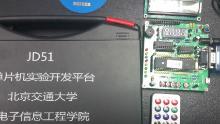暂无课程咨询信息 [发表课程咨询]
F3:财务会计 西安交通大学
- 内容简介:
- 财务会计(Paper F3 Financial Accounting)主要内容包括财务报告的内容和目的;财务信息的定性特征,以及会计的基本原理;复式分录和会计系统的使用等。
- 价格:
- 免费
课程介绍
| Introduction | Introduction | 1_Introduction |
| Chapter1-introduction to accounting | The purpose of financial reporting & Types of business entity | Purpose of financial reporting & Types of business entity |
| Chapter1-introduction to accounting | Nature, principles and scope of financial reporting | Nature, principles and scope of financial reporting |
| Chapter1-introduction to accounting | Users’ and stakeholders’ needs & Governance | Users’ and stakeholders’ needs & Governance |
| Chapter1-introduction to accounting | The main elements of financial reports | The main elements of financial reports |
| Chapter2-the regulatory framework | The regulatory framework | The regulatory framework |
| Chapter3-the qualitative characteristics of financial information | The IASB’s Conceptual Framework | The IASB’s Conceptual Framework |
| Chapter3-the qualitative characteristics of financial information | Qualitative characteristics of finance information | Qualitative characteristics of finance information |
| Chapter4-sources records and books of prime entry | The role of source documents | The role of source documents |
| Chapter4-sources records and books of prime entry | Books of prime entry | Books of prime entry |
| Chapter5-Ledger accounts and double entry | Ledger accounts and nominal ledger | Ledger accounts and nominal ledger |
| Chapter5-Ledger accounts and double entry | The accounting equation & Double entry bookkeeping | The accounting equation & Double entry bookkeeping |
| Chapter5-Ledger accounts and double entry | 4.5 Example: Credit transactions | 4.5 Example: Credit transactions |
| Chapter5-Ledger accounts and double entry | The journal | The journal |
| Chapter5-Ledger accounts and double entry | The receivables and payables ledgers | The receivables and payables ledgers |
| Chapter6-from trial balance to financial statements | The trial balance | The trial balance |
| Chapter6-from trial balance to financial statements | The statement of profit or loss | The statement of profit or loss |
| Chapter6-from trial balance to financial statements | The statement of financial position | The statement of financial position |
| Chapter7-sales tax | The nature of a sales tax and how it is collected | The nature of a sales tax and how it is collected |
| Chapter7-sales tax | Accounting for sales tax | Accounting for sales tax |
| Chapter8-inventory | Cost of goods sold | Cost of goods sold |
| Chapter8-inventory | Accounting for opening and closing inventories | Accounting for opening and closing inventories |
| Chapter8-inventory | Counting inventories & Valuing inventories | Counting inventories & Valuing inventories |
| Chapter8-inventory | IAS 2 Inventories | IAS 2 Inventories |
| Chapter9-tangible non-current assets | Non-current and current assets & Capital and revenue expenditure | Non-current & current assets Capital and revenue expenditure |
| Chapter9-tangible non-current assets | IAS 16 Property, plant and equipment | IAS 16 Property, plant and equipment |
| Chapter9-tangible non-current assets | Depreciation accounting | Depreciation accounting |
| Chapter9-tangible non-current assets | Depreciation methods | Depreciation methods |
| Chapter9-tangible non-current assets | Ledger entries for depreciation | Ledger entries for depreciation |
| Chapter9-tangible non-current assets | Revaluation of non-current assets | Revaluation of non-current assets |
| Chapter9-tangible non-current assets | Excess depreciation & Revaluation downwards | Excess depreciation & Revaluation downwards |
| Chapter9-tangible non-current assets | Non-current asset disposals | Non-current asset disposals |
| Chapter9-tangible non-current assets | Example: Disposal of assets | Example: Disposal of assets |
| Chapter10-intangible non-current assets | Intangible assets & Research and development costs | Intangible assets & Research and development costs |
| Chapter10-intangible non-current assets | Recognition of R&D costs & Amortization of development costs | Recognition of R&D costs & Amortization of development costs |
| Chapter11-accruals and prepayments | Accruals and prepayments | Accruals and prepayments |
| Chapter11-accruals and prepayments | Double entry for accruals and prepayments | Double entry for accruals and prepayments |
| Chapter11-accruals and prepayments | Question: Accruals | Question: Accruals |
| Chapter11-accruals and prepayments | 1.6 Example 4: Prepayments | 1.6 Example 4: Prepayments |
| Chapter11-accruals and prepayments | 1.8 Further example: Prepayments of income | 1.8 Further example: Prepayments of income |
| Chapter13-provisions and contingencies | Provisions | Provisions |
| Chapter13-provisions and contingencies | Contingent liabilities and contingent assets | Contingent liabilities and contingent assets |
| Chapter12-irrecoverable debts and allowances | Irrecoverable debts | Irrecoverable debts |
| Chapter12-irrecoverable debts and allowances | Allowances for receivables | Allowances for receivables |
| Chapter14-control accounts | What are control accounts? | What are control accounts? |
| Chapter14-control accounts | Discounts | Discounts |
| Chapter14-control accounts | The operation of control accounts | The operation of control accounts |
| Chapter14-control accounts | Balancing and agreeing control accounts with receivables and payables ledgers | Agree control accounts with receivables and payables ledgers |
| Chapter15-bank reconciliations | Bank statement and cash book & The bank reconciliation | Bank statement and cash book & The bank reconciliation |
| Chapter15-bank reconciliations | Worked examples | Worked examples |
| Chapter16-correction of errors | Types of error in accounting | Types of error in accounting |
| Chapter16-correction of errors | The correction of errors | The correction of errors |
| Chapter16-correction of errors | Suspense accounts | Suspense accounts |
课程参数
课程评论
暂无课程评论信息 [发表课程评论]
课程咨询








